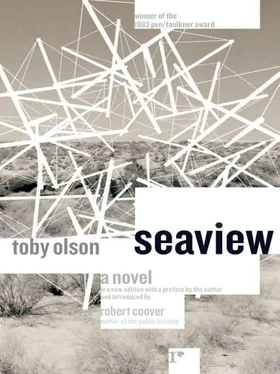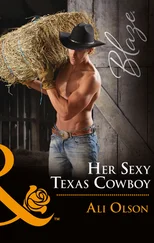While they were driving their carts to the tee, he figured the possibilities in order to clear that business away. He knew it would be him or Steve or even. Lou would be pressured out of it, and Frankie didn’t have the ball to play a hole of this distance well. If they halved the hole, he would be up three from Frankie and two from Lou. He’d take a hundred dollars, and that minus the thirty it had cost him for cart and green fees would put his winnings at seventy; not too good, but something. If Steve won, he’d owe him twenty for the hole and a hundred for winners. The hundred from the other two would cover most of it, but he’d be fifty dollars down. If he won, he’d be in much better shape. He’d get a hundred from each for winners, and a hundred and twenty for the holes. That would give him three hundred and ninety net. That would make this a very good day.
He got a little surprise when the four of them gathered on the tee. Steve had teed up but had gone back to the cart to dig in his bag. When his head was turned, Lou spoke, though a little reluctantly.
“How about a little pepper to finish up, say an extra half-hundred for best ball?” It was obvious that Steve had put him up to this on the way from the seventeenth.
“Why not,” Frankie said. “I could get a little back.” Allen agreed, and so did Steve.
The hole was a sharp dog-leg right, longer but not as difficult as the par-four tenth. It was not possible to reach the turn in the dog leg in one. The green was out of sight from the tee. From the card it was hard to tell what the hole was really like beyond the bend.
“Anything one should know about this one?” he said. Frankie seemed about to speak, but Steve cut him off.
“Just play it,” he said. It was the first really direct and sharp words Steve had spoken to him. There was a moment of embarrassment for the other two, but he covered it by saying, “Right, I guess that’s golf, isn’t it.” And then he smiled at Steve. Steve did not acknowledge his smile, but turned to address his ball. The other two stepped back and were still.
Steve’s drive was a good one. He played it to the right of the fairway. There were trees on that side, running around the dog leg. He found it hard to figure just why Steve had kept it up that side, and he watched to see how the other two played it. Lou skyed it slightly, but his power was enough so that he got out almost as far as Steve, a little to the left of him but still to the right of the middle of the fairway. Frankie hit a good drive, right down the middle, coming up about thirty yards short of the other two.
Before he hit, he took the card out and looked the hole over again. On the map there was an odd circle of quotation marks past the dog leg in the middle of the fairway, about halfway between the green and the knee, if anything a little closer to the green. It could be a tree, he thought, and he looked along the right of the fairway and over, the tops of the trees beyond the curve. If it was a tree, it was not a big one, he thought; he could not see any distant branches. He wondered if it was water. If it was, it did not look too significant. Still curious about Steve’s drive, he stepped up and addressed his ball. For a moment he thought about going up the right side with Steve and the other two. It would seem reasonable to follow the lead. But he liked the terms that came with playing the course blind, and he did not much like following Steve in anything. It just did not seem proper, from what he saw, to play the hole down the right. Whatever that thing was around the bend, if the card was in anyway accurate, it could not be too important as a hazard. So far the card had been fair, as had the course, with the possible exception of the difficulty of the tenth hole. He decided to play his drive to the left of the middle of the fairway and to really get into it. He took a full back swing, his left arm stiff, and when he came down through the ball, the hard muscle in his forearm snapped his wrist through it. The ball clicked off the screws, the tee jumping up behind it. It rose gradually, and when it looked to be at the top of its arc it kept rising. Then it peaked and began to drop. When it landed and finished its long roll, it was a good two hundred and seventy yards out, between the center and the left rough, no more than thirty yards from the bend, with a possible sight line down the turn toward the green.
He stopped short of his ball and got out of the cart. Frankie had taken a few clubs and climbed on the back with Steve and Lou. There was a large distance between their three balls and his. He had hit far enough to the left that he knew that though his ball was the longest, he would be away. He walked over behind his ball, checking his lie. When he looked up and sighted around the bend, some things became clear.
He knew he should have seen it when he started the round. The eighteenth green finished near the first tee, at right angles to it, and beyond the green, which he could now see, was the clubhouse. When he began, he had been too intent on getting involved with the three, and he had not looked around much. In the middle of the fairway, about two hundred and fifty yards from where he was and another hundred or so from the green, was a massive, domed mound of earth. It spanned the entire fairway, was pretty close to being circular, and there must have been a distance of at least a hundred feet from the flat of the fairway to its highest point. If it was the same on its far side as it was on this one, its diameter would be a good seventy-five yards.
There was rough growing on it that looked from this distance something like Eastern hog cranberry. The rough looked thick, but it was very even, probably kept that way by a grounds-keeper, and the evenness accentuated the symmetry of the mound. It did not look like any natural upheaval of land; it looked distinctly manmade.
On top of the mound, bright in its colors and at the dead center, was the largest totem pole Allen had ever seen. The pole rose a good thirty feet up in the air. Its painted shaft was three times the size of a telephone pole, and it had six brightly painted faces, with hawknoses, scowls, smiles, and appendages to their sides (ears or wings) that stood out yards away from it. On the very top, and not like any totem pole he had ever seen, was a larger than life-size figure of an Indian, dressed rather simply in a fringed outfit, a band with one feather in it around his head. He was standing very straight and still, arms at his sides, in his left hand what looked from this distance like a small tomahawk.
In the other was a quiver of arrows, and there was a bow hanging from the shoulder.
Allen shifted his eyes to the side of the mound and over it to where he could see part of the green with the clubhouse beyond it. Then he looked back at the stolid figure. Though the mound protected the green, the figure did not seem to be standing there for that purpose. It was as if he were apart from any concern. If he had some interest in events having to do with playing the hole, that interest was directed back to the potential of tee shots reaching the bend. He was high up and as such seemed apart from developing clusters of relationship that might occur below him. In this sense, the figure had a strange and distant austerity about him. He looked, also, extremely funny, like something from a miniature golf course designed for giants. On impulse, Allen yelled across to the others and pointed.
“Look at that!” he said. He saw Frankie nod. Steve just looked over at him. Lou was busy in his bag, and he acted as if he did not hear.
He felt he wanted to just stand there for a while, to just take the thing in, to fit it into the day, but he knew he did not have time for this. He looked over to check the rationale behind Steve’s shot. The three of them had trees to go over, but the trees were lower near the bend than the ones that had obscured them from the tee. There was, in fact, a kind of passage of low trees that one could get a three — or a four-iron over from where they were. A fairly good shot over the trees would fly the right side of the mound, and he judged that such a shot would bring the player to within seventy-five yards of the green, out in the open, with an easy wedge into it. If-and this was about the worst that could happen-the shot came up short, there was sufficient room between the edge of the mound and the right rough that the player could come down there and be left with no more than a hundred or a hundred and twenty yards in, again with an open shot. He, on the other hand, had trouble.
Читать дальше












